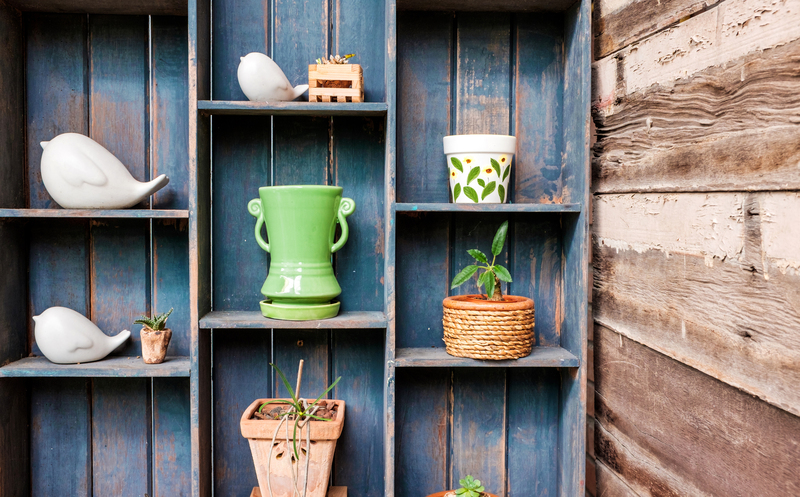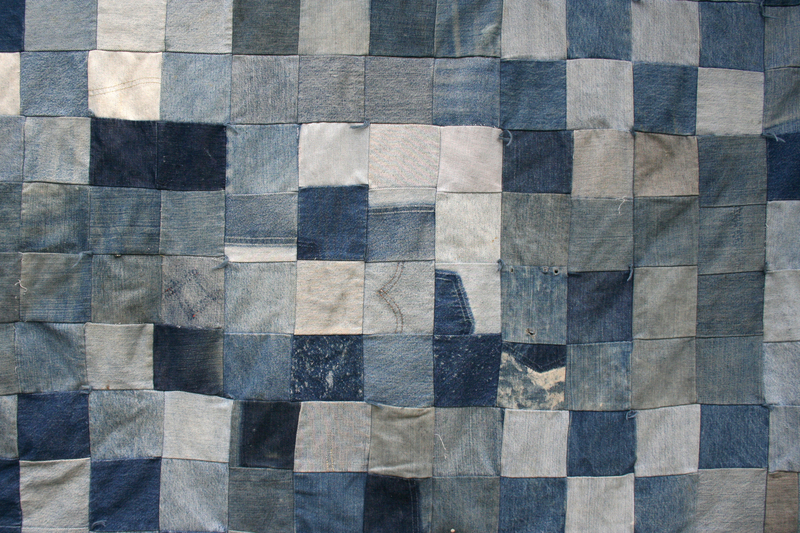Quick and Handy Plant Pot Disposal Techniques
Are old plant pots piling up in your yard or cluttering your storage space? With millions of gardeners facing the same dilemma after each growing season, finding efficient plant pot disposal techniques is crucial for a cleaner, greener environment. In this comprehensive guide, we'll explore quick and handy ways to dispose of plant pots, from environmentally friendly methods to creative upcycling ideas. Whether you're working with plastic, ceramic, or biodegradable pots, we'll help you choose the best disposal option for your space and lifestyle.
Why Proper Plant Pot Disposal Matters
Improper disposal of old plant pots can have lasting impacts on the environment. Plastics, in particular, can take hundreds of years to decompose, leaching chemicals into the soil and waterways. On the other hand, ceramic and terracotta pots clutter landfills and rarely break down naturally. By exploring the most effective plant pot disposal techniques, you can reduce your environmental footprint and perhaps even encourage others in your community to do the same.

How to Identify Your Plant Pot Material
Before you dispose of your unwanted pots, it's important to determine their material. This will inform the most suitable disposal or recycling process.
- Plastic pots: Lightweight and flexible, usually with a recycling symbol at the bottom indicating the type of plastic.
- Ceramic pots: Heavy and brittle, often glazed or decorated.
- Terracotta pots: Unfinished, reddish-brown clay material, more porous than ceramic.
- Biodegradable pots: Made from organic materials like peat, coir, or paper pulp, and will break down naturally over time.
Knowing your pot's composition is the first step for eco-friendly plant pot disposal.
Eco-Friendly Plant Pot Disposal Methods
1. Recycling Old Plastic Plant Pots
Plastic plant pot disposal is a top concern for many gardeners, as not all plastics are accepted in curbside recycling. Here's how you can responsibly recycle them:
- Check local recycling guidelines: Contact your city's recycling center. Some accept #2 and #5 plastics, which many nursery pots are made from.
- Nursery take-back programs: Many garden centers, such as Lowe's, Home Depot, and local nurseries, have plant pot recycling programs where you can drop off used containers for reuse or recycling.
- Clean before recycling: Remove all soil and plant residue to prevent contamination in the recycling process.
If recycling is unavailable in your area, upcycling or repurposing might be the best option for those old plastic containers.
2. Disposing of Ceramic and Terracotta Pots
Unlike plastics, ceramic and terracotta plant pots are not generally accepted by recycling centers due to their mixed glazes and density. Here's what you can do:
- Repurpose as garden pathways: Break the pots into small pieces and lay them on paths for a rustic, decorative look.
- Drainage material: Use broken shards in the bottom of new pots to improve drainage.
- Community art projects: Donate clean, intact pots to schools, art centers, or garden clubs for creative use.
- Waste disposal: If none of the above work for you, place ceramic or terracotta pots in the trash, but remember it's the least eco-friendly option.
3. Composting Biodegradable Pots
Biodegradable plant pots are gaining popularity for their low environmental impact. Made from materials like coconut coir, peat, or rice hulls, these pots can usually be composted or planted straight into the ground.
- Composting: Tear them into small pieces and add them to your compost pile. They'll decompose along with your kitchen and yard waste.
- Planting directly: Many of these pots are designed to be planted with the plant. The pot breaks down and enriches the soil.
Always check the packaging or manufacturer instructions before composting or planting, as some pots may contain binders or coatings that are not fully biodegradable.
Creative Ways to Repurpose Old Plant Pots
Sometimes, the easiest plant pot disposal technique is simply giving your old pots a new life! Repurposing not only saves landfill space but also adds unique touches to your home or garden.
DIY Garden Upcycling Projects
- Organize your tools: Use large pots to keep garden gloves, trowels, and labels organized.
- Tabletop organizer: Clean, colorful pots make stylish containers for pens, brushes, or kitchen utensils.
- Birdbath or feeder: Attach an upside-down pot to a sturdy base, add a saucer, and you have a quick birdbath or feeder.
- Decorative planters: Paint old pots with fun designs and use them for succulents or herbs indoors.
- Fairy garden base: Create a magical miniature landscape with broken or stacked pots for kids or hobbyists.
Donation and Community Options
Donating unwanted plant pots extends their life and benefits others. Here's who may want your extras:
- Community gardens: Many local gardens appreciate extra containers for propagating plants or distributing starter plants to new gardeners.
- Schools: Teachers often use pots for classroom gardening lessons.
- Charity plant sales: Nonprofits and clubs hold annual sales and always need extra containers.
- Online sharing groups: Share or exchange pots via "Buy Nothing" Facebook groups, Freecycle, or local garden forums.
This method of plant pot reuse helps build a sustainable gardening community.
Step-by-Step Guide to Proper Plant Pot Disposal
- Assess your pots: Separate by material: plastic, ceramic, terracotta, biodegradable.
- Check condition: Clean and intact pots are best for recycling or reusing. Broken ones may still be upcycled creatively.
- Find local programs: Locate recycling centers, charity drop-offs, or garden center take-back programs in your area.
- Prepare for disposal: Clean all pots to remove soil and roots. This step is essential for both recycling and reusing.
- Dispose or repurpose:
- Recycle eligible plastics and drop off at designated spots.
- Compost or plant biodegradable pots as directed.
- Donate or upcycle as needed.
- If no other option remains, dispose of broken ceramics and plastic pots in household waste, but only as a last resort.
Plant Pot Disposal Tips for Large-Scale Gardeners
Professional landscapers and commercial growers can accumulate huge piles of used plant pots. Here are some efficient large-scale plant pot disposal methods:
- Bulk recycling: Partner with a specialized recycling company to handle large quantities of plastic pots.
- Manufacturer take-back: Some brands offer incentives for returning used containers.
- Reusable pot systems: Consider a switch to sturdy, reusable pots made from recycled plastic to cut down on waste in the long term.
- Organize community events: Host a collection drive for pots and coordinate with local schools and nonprofits for distributions.
These methods not only free up storage space but also enhance your organization's green credentials.
Common Plant Pot Disposal Mistakes to Avoid
- Mixing dirty pots with recyclables: Soil and plant debris can contaminate recycling batches, making them unusable.
- Assuming all plastics are recyclable: Not every plant pot plastic can be recycled curbside. Always check the numbers and local guidelines.
- Throwing away reusable pots: Many pots, especially sturdy ones, have years of life left and could benefit others.
- Ignoring hazardous coatings: Some decorative or glazed pots contain chemicals that may not biodegrade. Always check before composting or recycling.

Frequently Asked Questions on Plant Pot Disposal
Can I put plant pots in my curbside recycling bin?
It depends on your local recycling program. Many do not accept plant pots due to their shape, type of plastic, or dirt contamination. Always check local guidelines first.
What do I do if my plant pots don't have a recycling symbol?
If there's no recycling number or symbol, your best option may be to reuse, donate, or drop them off at a nursery take-back program if available.
Are biodegradable pots safe for composting at home?
Most biodegradable pots are safe, but check labeling for any chemical binders. Break pots into small pieces to speed up decomposition.
Is there a market for old, large plant pots?
Yes! Many gardeners, landscapers, and nonprofits look for large, durable pots. Post yours online or call local community gardens.
How can I find a local plant pot recycling program?
Search online for "plant pot recycling near me" or check with major home and garden centers. Your city government's waste management site is also a good resource.
Conclusion: Embrace Sustainable Plant Pot Disposal
Disposing of old plant pots doesn't have to be an environmental burden. From innovative recycling to fun upcycling projects, you have a range of quick and handy plant pot disposal techniques at your fingertips. Remember to assess your pots, choose the most sustainable methods, and encourage friends and neighbors to do the same. Every small action contributes to a cleaner, greener planet--and a more beautiful garden.
Now that you know how to get rid of unwanted plant pots responsibly, why not share your favorite disposal method with your gardening community? Together, we can make sustainable plant pot disposal the norm, not the exception!